All swimming pools require a sanitizer, even saltwater pools. Chlorine is the most popular choice. However, chlorine produces strong smells and chemical off-gassing that irritates the eyes, lungs, skin, and throat. The effects of chlorine have many pool owners searching for a water-sanitation alternative.
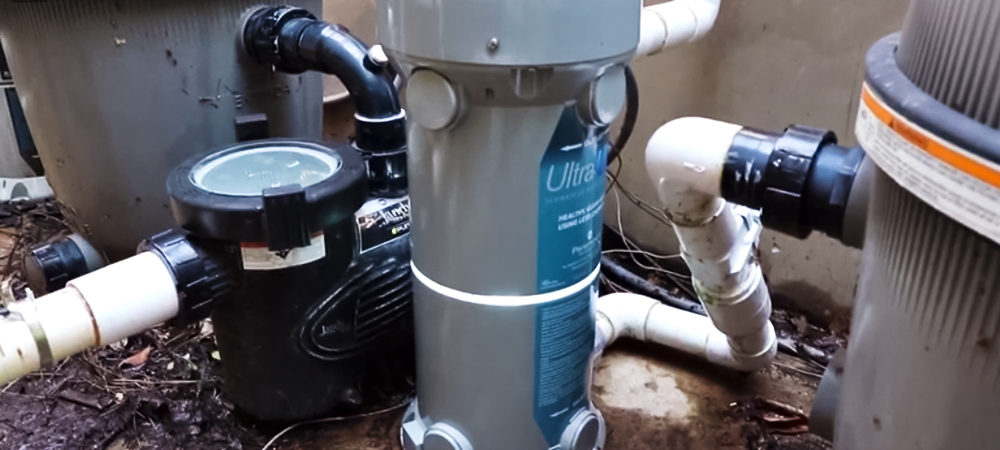
Ultraviolet light is a highly efficient, eco-friendly supplement for the filtration system of any swimming pool, and it greatly reduces the amount of chlorine needed to sanitize the water. UV sanitizers are even able to destroy some organisms that chlorine can’t, such as the cryptosporidium parasite that causes crippling diarrhea and nausea.
To neutralize algae spores, bacteria, viruses and other pathogens, the UV-light assembly is installed directly after the pool’s filter. When water flows over the quartz tube, the UV lamp inside the glass directs light onto the microorganisms, stopping 99.9 percent of these pathogens from multiplying.
On our list of UV sanitizers, you’ll notice that they come in different sizes to meet various pumps’ flow rates. Therefore, you’re sure to find at least one that will work for your swimming pool. If you’re just learning about UV pool sanitation, check out our buyer’s guide to learn how to install, maintain, and size one.
This website is supported by readers. As an Amazon Associate we earn from qualifying purchases.
Best Pool Sanitizers: UV
Best Pool Sanitizer: UV Buying Guide
When an ultraviolet pool sanitizer is activated, it only takes a day or two for swimmers to notice a positive difference in the pool water’s hygiene and clarity. However, the sanitizer only works to its full capacity if the flow rate can keep pace with the pump’s water flow.
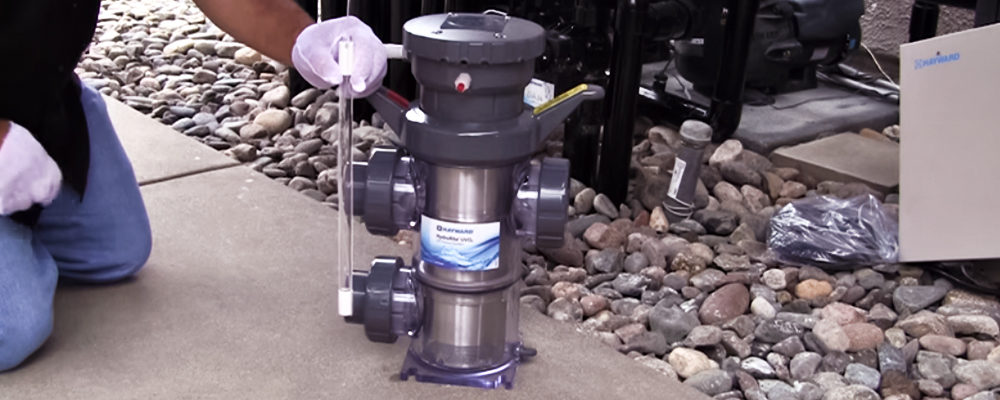
As you’ll learn in this guide, installation and maintenance are straightforward processes, and the use of a UV light can even lower your energy and chemical costs. If these benefits pique your interest, this guide will tell you how to size a UV lamp for your swimming pool and whether you need a low or a medium-pressure light.
Installing a UV Pool Sanitizer
UV sanitizers are safe to use in above-ground and in-ground pools. They won’t damage concrete, fiberglass or vinyl surfaces, and they’re compatible with saltwater setups. During and after installation, there are no strict safety measures you have to take against exposure because the UV light can’t penetrate through the sterilization chamber.
A UV sanitizer is installed in-line between the filter and the heater. Smaller ultraviolet lamps typically come with an outlet plug, but some larger ones are hardwired. If you decide to upgrade a UV sanitizer by adding more bulbs, doing so only takes a few minutes, and all the components necessary for installation should come with the UV assembly.
Maintaining a UV Light
Every ultraviolet bulb that’s designed for a swimming pool is different in terms of wattage, pressure and flow rate. Some last for a year while others have a lifespan of 6 years, but most fall somewhere in between this range. Since UV lamps can still glow after they’ve expired, we advise changing them on a set schedule.
Like all other components in your swimming pool, the UV sanitizer will require routine inspections and maintenance. About every four months, set aside 10 minutes to look over the UV sanitizer. You’ll need a screwdriver and a wrench to access the quartz tube unless you have a quick-release model.
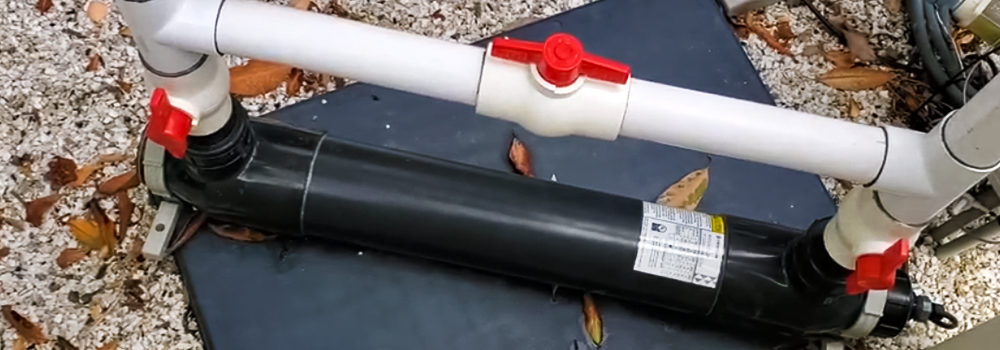
While you have the sanitizer open for inspection, utilize that opportunity to clean the quartz tube. A mixture of lemon juice and water or a mild descaler is all that’s needed to get the job done. White vinegar can be used in the place of lemon juice if you prefer.
Once you’re ready to close the pool for winter, there are only a few steps to take to prepare the UV sanitizer. If it’s a plug-in sanitizer, you can unplug, drain and remove the entire assembly, storing it inside until next pool season. If it’s a hardwired sanitizer, you’ll need to take out the bulb instead.
Energy Usage
Low energy usage and the resulting low electricity costs are two of the many benefits of ultraviolet technology. The number of bulbs in the UV sanitizer, the wattage of each bulb and the number of hours per day you run it determines how much money a sanitizer will add to your electricity bill.
To calculate the added cost to your electricity bills, you’ll need to do a simple four-step math equation. If the UV sanitizer has one 50-watt bulb, you’ll multiply 50 by 12 (the minimum number of recommended hours to run a UV sanitizer each day), which gives you 600 watt-hours per day.
Then, divide 600 by 1,000 (the number of watts in 1 kilowatt) – This equals 0.6 kilowatt-hours per day. Next, multiply 0.6 by 30 (the rounded average number of days in a month), which comes out to 18 kilowatt-hours per month.
Finally, multiply 18 by the cost of electricity per kilowatt-hour. The cost of electricity differs by month and location. We chose the current national average of 13.52 cents (don’t forget to move the decimal back two places). Therefore, running a 50-watt UV sanitizer for 12 hours per day only adds $2.43 to your electricity bill.
Low Pressure vs. Medium Pressure
When you’re checking out reviews and specs, you’ll inevitably come across the terms “low pressure” and “medium pressure.” During the manufacturing process, the UV lamp is evacuated to create a vacuum inside of it. Then, it’s filled with a gas such as Argon or a mixture of Argon and Neon.
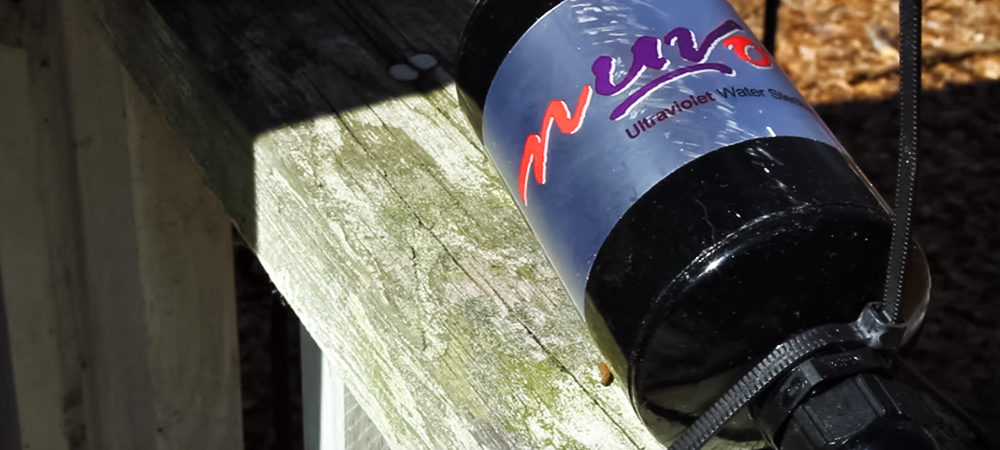
A low-pressure UV sanitizer is filled with gas up to 10 millibars of pressure. You’ll recognize a low-pressure lamp instantly by its elongated appearance. A medium-pressure UV sanitizer is filled with gas up to 5 bars of pressure; this type of lamp is contained in a squat housing.
Low-pressure UV lamps generate a single wavelength of 254 nanometers, which works great for most residential swimming pools. Medium-pressure UV sanitizers create a band of light that runs across 200 to 600 nanometers. Due to its broader germicidal spectrum, medium-pressure UV sanitizers are ideal for indoor, commercial, and heavily used pools.
Sizing a UV Sanitizer
If the sanitizer is undersized, the water won’t move through the sanitizer fast enough, resulting in the buildup of inactive pathogens and the need for more chlorine. If the sanitizer is oversized, the water will move through the unit before the UV lamp has a chance to neutralize the germs. This means there is little wiggle room for sizing.
Every pool pump has a flow rate. The same goes for UV sanitizers. Look at the pump’s label (or use a flow meter) and choose a sanitizer that meets the pump’s gallon-per-minute flow rate, which should be listed in the specs. If the pump is a dual-speed or variable-speed model, match the sanitizer to the pump’s lowest speed.
FAQs
Can a UV Pool Sanitizer Get Rid of That Chlorine Smell?
A hint of chlorine in the water signifies to most people that a swimming pool is clean, but that smell can be too strong sometimes. Plus, it can wreak havoc on the body. However, it’s not the chlorine itself that’s responsible for that distinct odor.
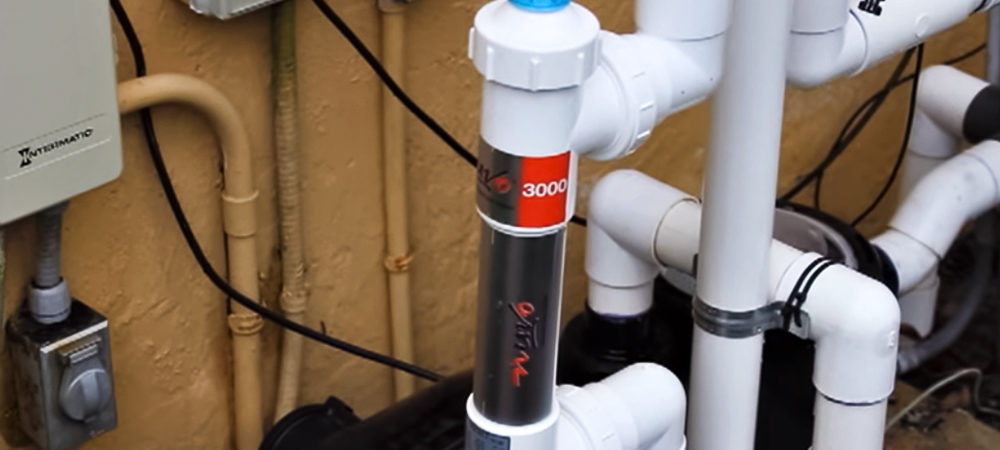
When people swim in a pool, sunscreen, sweat, natural body oils and urine build up over time. These substances react with the chlorine in the water, creating an off-gas known as chloramine. It’s the chloramine, not the chlorine, that makes the knock-you-over chemical smell.
Indoor swimming pools tend to have a bigger problem with chloramines due to the lack of circulation in the surrounding atmosphere. Shocking the pool by adding more chlorine is the traditional way to get rid of chloramines. However, a UV sanitizer can greatly reduce the chloramine level in a swimming pool and eliminate that accompanying smell.
Do I Still Need to Use Pool Chemicals?
When safely harnessed as it is in a quartz tube, ultraviolet light is an amazing sanitation tool, reducing the need for chemicals by 50 to 90 percent. Unlike chlorine, ultraviolet light can destroy cryptosporidium in minutes. With chlorine, it can take all day to kill this parasite, and you’ll need at least 10 parts per million to do it.
A UV sanitizer can neutralize approximately 60 varieties of algae, bacteria, parasites and viruses. However, the sanitizer can’t capture the ineffective germs, and its reach doesn’t extend to the water inside the pool. This means you must still monitor and chemically control the pool’s alkaline and pH levels as well as employ skimmers and a filter.
How Often Should I Run the Pump?
The pump must run for the UV sanitizer to work. To be effective, the sanitizer should run 12 to 24 hours per day. This is where a dual-speed or a variable-speed pool pump can save you money by running the pump at its lowest speed. Certain states require pool owners to use a variable-speed pump.

You don’t have to keep an eagle eye on the pump and the sanitizer to ensure both are running. Some UV pool sanitizers are equipped with a pressure-sensing switch. The switch can detect when the pump is running, turning on the sanitizer automatically. The switch also shuts off the sanitizer when the pump stops.
UV Pool Sanitizer: Recap
From installation to maintenance, UV pool sanitizers are rather hassle-free. Installation is straightforward enough for a DIYer of any level to handle. Maintenance takes less than 10 minutes, and you only need to clean the quartz tube three times a year. Plus, the bulbs have a long lifespan.
UV sanitizers are compatible with any type of pool setup, and you can add more bulbs if you decide your pool needs a boost in sanitation power. No matter the number of lamps and the total wattage, running one won’t break the bank.
While sizing a UV pool sanitizer is fairly easy since it’s primarily based on matching its flow rate to that of the pool’s pump. However, you must be somewhat precise with your sizing, and you should opt for a medium-pressure UV lamp if your pool is located indoors or hosts a heavy swimmer load.
As long as you size it right and run it long enough each day, you’ll cut down on chemical use and chlorine off-gassing while making your water cleaner and life easier.
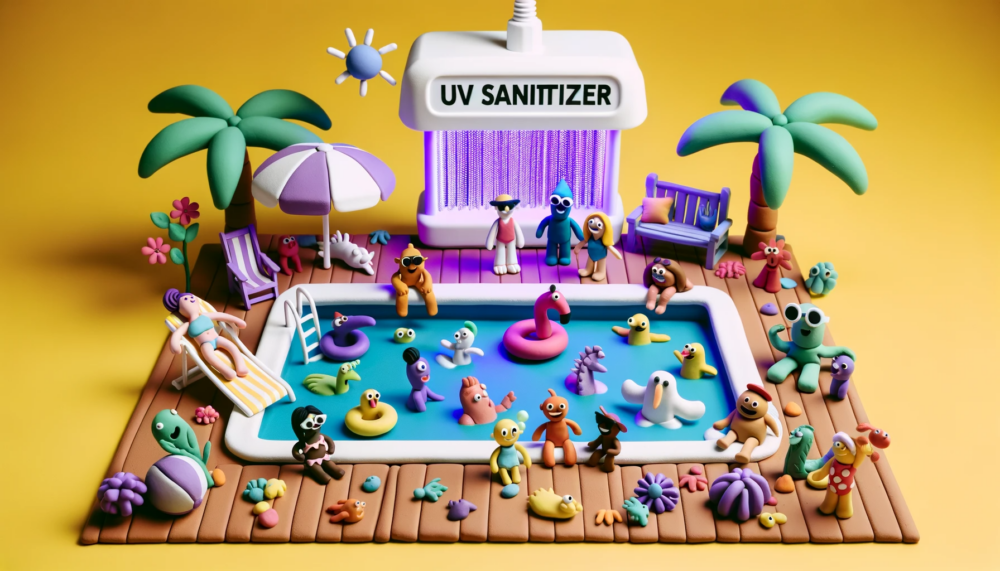
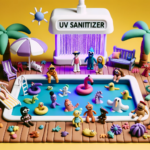
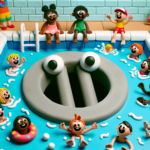
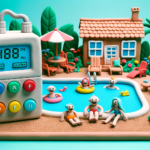

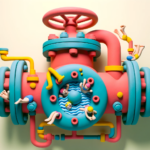
im interested in eliminating chroline as much as possible from my 20/40 ft in ground pool.In addition to uv sanitation is adding food grade 35% hydrogen peroxide to uv devices in place of chorline an acceptable game plan?